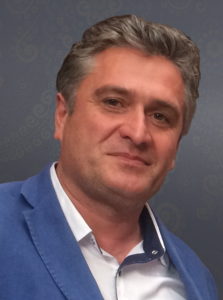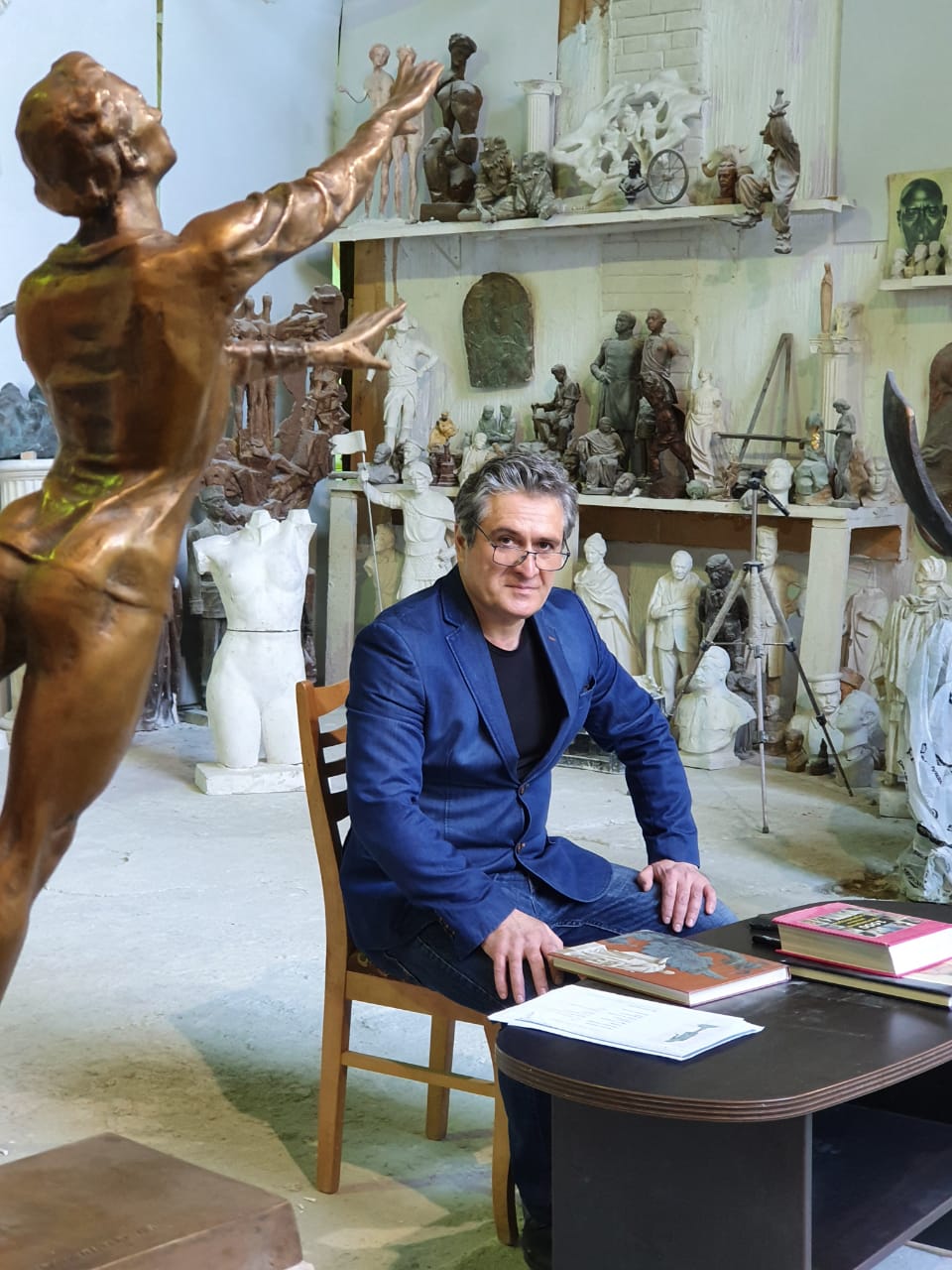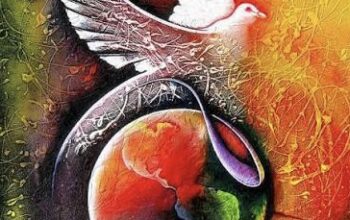| The Artistic Journey of Besik Solomonashvili – A Renowned Sculptor |

Prof. Besik Solomonashvili is a distinguished Russian-Georgian sculptor renowned for his evocative and powerful works that capture the human spirit. With a career spanning over three decades, his journey in the world of art began with a spark ignited during a visit to the Museum of Fine Arts in Tbilisi. Mentored by the legendary Zurab Konstantinovich Tsereteli, Mr. Solomonashvili has contributed to numerous monumental and chamber works, leaving an indelible mark on the art world. His sculptures, known for their deep symbolism and emotional resonance, reflect themes of strength, endurance, unity, and the complexities of human experience. A recipient of numerous accolades, he continues to inspire with his innovative approach and unwavering passion for art.
World Scientist Journal: Prof. Solomonashvili, your work has had a profound impact on the art world. To start, can you tell us about your early interest in sculpture and the support you received from your parents?
Besik Solomonashvili: Actually, My love for art began in my childhood. I vividly remember a visit with my father to the Museum of Fine Arts in Tbilisi. That visit left a lasting impression on me. I stood there, captivated by the works of the great masters. I didn’t ask any questions; I just absorbed the beauty and skill before me. It was in those silent moments that something clicked in my soul. As I grew older, I pursued this passion at the Academy of Arts, and it has been my life’s calling ever since.
World Scientist Journal: Your collaboration with the renowned Georgian-Russian painter and sculptor Zurab Konstantinovich Tsereteli has been pivotal in your career. Can you share some insights into this partnership and its impact on your artistic development?
Besik Solomonashvili: Ah, Zurab Konstantinovich Tsereteli—a true mentor and inspiration. Our collaboration began about 30 years ago, and it has been a transformative journey. Under his guidance, I have been part of creating many monumental and chamber works. Working with someone driven by the energy of love and kindness has been a blessing. His influence has shaped my approach to monumental sculpture and public art in ways I couldn’t have imagined.
World Scientist Journal: You’ve created art that addresses somber themes, such as the “Tear of Grief” and the Beslan Massacre memorial. How do you capture the depth of human emotion and resilience in your work?
Besik Solomonashvili: Tragedy is an inevitable part of life, and it deeply influences all forms of art. When dealing with such heavy themes, it’s crucial to convey genuine emotion. You can’t fake it. The language of sculpture must reach the hearts of the audience. It’s about expressing the profound sadness and resilience that come from such experiences. It’s a challenging task, but I strive to honor those emotions truthfully.
World Scientist Journal: Horses are a recurring motif in your work, symbolizing strength and endurance. Could you tell us more about this symbolism and any specific works where it has been particularly meaningful to you?
Besik Solomonashvili: Horses are indeed a favorite theme of mine. They embody a unique combination of tenderness, sensitivity, strength, and power. Throughout history, horses have been symbols in myths, literature, and art, representing rebellion and freedom. In my sculptures, I use their image to convey these virtues and the idea of unyielding spirit and freedom.
World Scientist Journal: The theme of balance and unity between men and women is prominent in your sculptures. How do you approach this theme, and what message do you hope viewers take away?
Besik Solomonashvili: The balance between men and women is a timeless and beautiful mystery in art, much like in life. This theme inspires me deeply. Through my work, I aim to reflect the harmony and complementarity of masculine and feminine energies. It’s about recognizing and celebrating the unique contributions of both genders to a harmonious and balanced world.
World Scientist Journal: You’ve expressed concerns about the rapid technological development and its impact on our perception of reality. How do you see traditional art forms playing a role in countering this shift?
Besik Solomonashvili: We live in a post-industrial world where technological advances have changed our perception of reality. While this transformation isn’t inherently negative, it does pose the risk of losing touch with tangible, real-world experiences. Traditional art forms have the power to reconnect us with these experiences, reminding us of the enduring truths and beauty that lie beyond the digital realm.
World Scientist Journal: Despite your numerous accolades and prestigious positions, what drives your continuous innovation and passion in the field of sculpture?
Besik Solomonashvili: Recognition and awards are indeed gratifying and inspiring. However, what truly drives me is the creative process itself. The opportunity to explore new ideas, express profound emotions, and connect with people through my art is what keeps me going. It’s about pushing the boundaries of what is possible in sculpture and finding new ways to inspire and engage audiences.
World Scientist Journal: Reflecting on your artistic journey, which experiences or projects stand out as the most transformative?
Besik Solomonashvili: It’s difficult to pinpoint a single experience or project. Each work I create feels like I’m picking up tools for the first time. They are all unique, yet they complement each other. From my early days in Tbilisi to my significant projects like the “Tear of Grief” and the memorials in Moscow, every piece has its own story and impact on my artistic evolution.
World Scientist Journal: The recognition from the President of the Russian Academy of Arts and the Presidium must be a significant honor. How has this acknowledgment influenced your work and approach to new projects?
Besik Solomonashvili: Recognition from Mr. Zurab Konstantinovich Tsereteli and the Presidium is indeed an honor. It means a lot, not just because of their positions, but because of their expertise and wisdom. This acknowledgment motivates me to continue striving for excellence in my work and to push the boundaries of creativity.
World Scientist Journal: Your dual cultural heritage as a Russian-Georgian sculptor adds a unique dimension to your work. How do you integrate these cultural influences into your artistic style and thematic choices?
Besik Solomonashvili: My cultural heritage is deeply ingrained in my work. Georgian art has a more generalized and free approach, while Russian art is stricter and more academic. This blend allows me to create a unique style that resonates with a diverse audience. These cultural influences help me address universal themes and connect with people on a deeper level.
World Scientist Journal: As a sculptor, you’ve faced various challenges. Can you share a specific challenge you encountered and how you overcame it, possibly with the help of your mentors?
Besik Solomonashvili: Life as an artist is a constant struggle and overcoming challenges. Translating complex ideas and emotions into tangible forms can be daunting. Working on large-scale projects involves logistical and technical difficulties. The wisdom and guidance of my mentors, like Mr. Tsereteli, have been invaluable in navigating these obstacles. Their support and my commitment to continuous learning have helped me overcome many challenges.
World Scientist Journal: For aspiring sculptors, what key pieces of advice would you offer to help them navigate the artistic journey and develop their unique voice?
Besik Solomonashvili: My advice to aspiring sculptors is simple: stay true to your vision and passion. The journey of an artist is filled with ups and downs, but perseverance is key. Seek inspiration from your surroundings, learn from mentors, and continuously hone your skills. Don’t be afraid to experiment and push the boundaries of your creativity. Most importantly, believe in the power of your art to communicate and connect with others.
World Scientist Journal: Looking ahead, what themes or projects are you most excited to explore, and how do you see your work evolving in response to contemporary global challenges?
Besik Solomonashvili: I’m always on a creative quest. I’m particularly interested in exploring themes of unity and resilience in the face of global challenges. I also want to highlight the importance of preserving cultural heritage and promoting peace through art. The journey of an artist is ever-evolving, and I look forward to the new directions my work will take.
World Scientist Journal: Thank you, Mr. Solomonashvili, for sharing your valuable insights and experiences with us. We look forward to seeing more of your exceptional work in the future.
Besik Solomonashvili: Thank you.
News Article written and interview By Prof. J.S.K.Jayasekara



